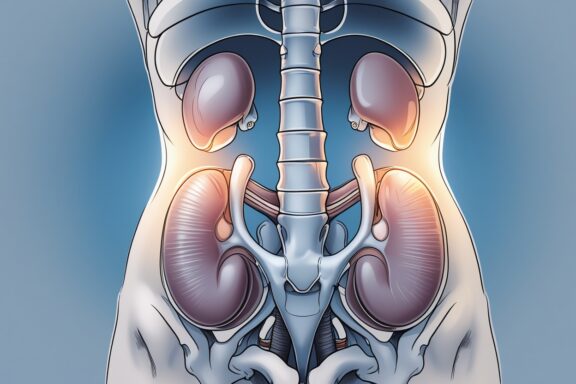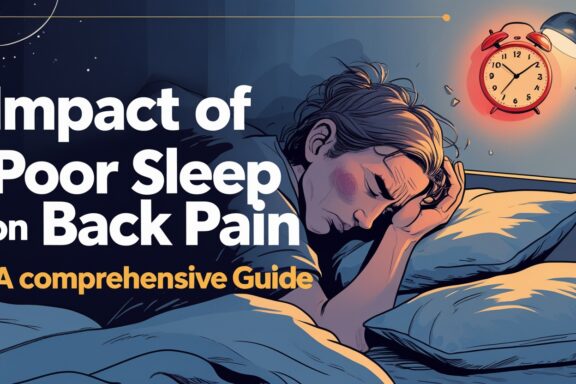Living with chronic back pain? You're not alone—millions suffer daily from this debilitating condition. But here's the good news: physical therapy offers a proven, drug-free path to lasting relief that addresses the root causes, not just symptoms.
Living with chronic back pain feels like carrying an invisible burden that never lifts. One day you're fine, the next you can barely get out of bed. Sound familiar? Well, you're definitely not alone in this struggle—chronic back pain affects roughly 16% of adults worldwide, making it one of the leading causes of disability.
But here's where things get interesting. While many people immediately reach for pain meds or consider surgery, there's a more effective, long-term solution hiding in plain sight: physical therapy. PT isn't just about doing a few stretches and calling it a day. Nope! It's a comprehensive, science-based approach that tackles chronic back pain from multiple angles, addressing the root causes rather than simply masking symptoms.
Understanding Chronic Back Pain: More Than Just an Ache
The Complex Nature of Persistent Back Pain
Chronic back pain isn't your garden-variety soreness after a tough workout. We're talking about pain that persists for 12 weeks or longer—pain that's become your unwelcome daily companion. Unlike acute pain, which serves as a helpful warning signal, chronic pain often develops its own neurological pathways, essentially becoming a condition unto itself.
The causes? Oh boy, they're as varied as they are frustrating. Herniated discs, spinal stenosis, muscle imbalances, poor posture from hunching over computers all day—the list goes on. Sometimes, there's no clear structural damage at all! The pain just… exists, making life miserable and limiting your ability to enjoy simple pleasures like playing with your kids or taking evening walks.
Why Traditional Approaches Often Fall Short
Here's the kicker: many conventional treatments focus on symptom management rather than addressing underlying issues. Pain medications provide temporary relief but don't fix the mechanical problems causing your discomfort. Surgery, while sometimes necessary, carries risks and doesn't guarantee success. In fact, studies show that conservative treatments like physical therapy often produce comparable or superior long-term outcomes compared to invasive procedures.
How Physical Therapy Tackles Chronic Back Pain Head-On
The Science Behind PT's Effectiveness
So, how exactly does physical therapy work its magic on chronic back pain? It's not just one thing—it's a multi-pronged attack that addresses various contributing factors simultaneously. PT combines movement therapy, manual techniques, pain education, and lifestyle modifications to create lasting change in your body's function and your pain experience.
Research consistently demonstrates PT's effectiveness. A landmark study published in the Annals of Internal Medicine found that patients receiving physical therapy showed significant improvements in both pain levels and functional ability compared to those receiving standard medical care alone. The American Physical Therapy Association (APTA) emphasizes that PT should be the first line of treatment for chronic back pain, not a last resort.
Key Components of Physical Therapy Treatment
Physical therapy for chronic back pain isn't a cookie-cutter approach—it's highly individualized. However, most comprehensive PT programs include these essential elements:
1. Therapeutic Exercise Programs
- Strengthening exercises targeting core muscles, glutes, and back extensors
- Flexibility routines to improve range of motion
- Functional movement training that mimics daily activities
2. Manual Therapy Techniques
- Joint mobilization to restore proper movement patterns
- Soft tissue massage to reduce muscle tension and trigger points
- Spinal manipulation when appropriate
3. Pain Science Education
- Understanding the difference between hurt and harm
- Learning about pain pathways and chronic pain mechanisms
- Developing coping strategies and movement confidence
Specific Physical Therapy Techniques That Provide Relief
Strengthening the Foundation: Core Stability Training
Your core isn't just about getting six-pack abs—though that would be nice, right? It's about creating a stable foundation that supports your spine during every movement. Chronic back pain often develops when certain muscles become weak or inhibited, forcing other structures to compensate in ways they weren't designed for.
PT focuses heavily on reactivating and strengthening these deep stabilizing muscles. We're talking about muscles like the transverse abdominis, multifidus, and pelvic floor muscles that work together to create internal stability. These aren't the muscles you see in the mirror, but they're absolutely crucial for spine health. When they're firing properly, they reduce stress on your spine's passive structures like discs and ligaments.
Manual Therapy: Hands-On Healing
There's something incredibly powerful about skilled hands-on treatment. Manual therapy techniques used by physical therapists can provide immediate relief while also creating lasting changes in tissue mobility and joint function. Joint mobilization techniques help restore normal movement patterns to stiff spinal segments, while soft tissue techniques address muscle tension and fascial restrictions.
Dry needling, a technique where thin needles are inserted into trigger points, has gained popularity for treating chronic back pain. Many patients report significant pain reduction after just a few sessions. However, it's worth noting that manual therapy works best when combined with exercise—the hands-on work creates a window of opportunity that exercise helps maintain long-term.
Movement Re-education: Teaching Your Body New Tricks
One of the coolest aspects of physical therapy is movement re-education. Over time, chronic pain often leads to compensatory movement patterns that actually perpetuate the problem. You might start favoring one side, hunching your shoulders, or avoiding certain movements altogether. These adaptations seem protective in the short term but create new problems down the road.
PT helps you unlearn these dysfunctional patterns and develop healthier movement habits. This might involve something as simple as learning how to bend over properly or as complex as retraining your walking pattern. The goal is to move with confidence and efficiency, reducing stress on painful structures.
The Role of Exercise Prescription in Chronic Back Pain Management
Targeted Strengthening Programs
Not all exercises are created equal when it comes to chronic back pain relief. Generic fitness routines might actually make things worse if they don't address your specific impairments. That's where the expertise of a physical therapist becomes invaluable—they can design exercise programs tailored to your unique needs and limitations.
Strengthening programs typically progress from basic stability exercises to more complex, functional movements. You might start with simple exercises like pelvic tilts or modified planks, then gradually advance to more challenging activities like deadlifts or rotational movements. The key is progressive loading—gradually increasing demands on your tissues to promote adaptation and strength gains.
Flexibility and Mobility Work
Tight muscles and stiff joints often contribute to chronic back pain, creating a vicious cycle of compensation and dysfunction. However, not all stretching is beneficial—some traditional stretches might actually irritate sensitive tissues. Physical therapists use movement assessments to identify specific restrictions and prescribe targeted mobility exercises.
Hip flexor stretches, for example, can be particularly beneficial for people who sit for long periods. Tight hip flexors pull on the lumbar spine, contributing to excessive arch and back pain. Similarly, improving thoracic spine mobility can reduce stress on the lower back by allowing better distribution of movement throughout the spine.
Addressing the Psychological Aspects of Chronic Pain
Pain Education and Cognitive Behavioral Approaches
Here's something many people don't realize: chronic pain isn't just physical—it's also neurological and psychological. Long-standing pain literally changes your nervous system, making it more sensitive to threats and more likely to produce pain signals. Understanding this connection is crucial for successful treatment.
Modern physical therapy incorporates pain neuroscience education, helping patients understand that pain doesn't always equal tissue damage. This knowledge can be incredibly liberating! When you realize that movement won't necessarily harm you, it becomes easier to engage in therapeutic activities. Many patients report that simply understanding their pain better reduces its intensity and impact on their lives.
Fear avoidance is another critical factor that PT addresses. When you're afraid that movement will cause harm, you naturally limit your activities. Unfortunately, this protective behavior often leads to deconditioning, increased stiffness, and paradoxically, more pain. Physical therapists help patients gradually challenge these fears through graded exposure to movement.
Building Movement Confidence
One of the most rewarding aspects of physical therapy is watching patients regain confidence in their bodies. Chronic pain often erodes your trust in your body's ability to function normally. Every movement becomes a potential threat, every activity a calculated risk.
Through carefully progressed exercises and education, PT helps rebuild this confidence. As patients successfully perform movements they once feared, their self-efficacy improves. This psychological shift is often as important as the physical improvements in determining long-term success.
Lifestyle Modifications and Ergonomic Considerations
Workplace Ergonomics and Posture Correction
Let's face it—most of us spend way too much time slouched over computers, creating perfect storm conditions for chronic back pain. Physical therapists are experts at analyzing work environments and recommending modifications that reduce spinal stress throughout the day.
Simple changes like adjusting monitor height, using a lumbar support cushion, or taking regular movement breaks can make a huge difference. However, it's not just about having perfect posture—it's about changing positions frequently and avoiding prolonged static postures. The best posture is your next posture, as they say in the PT world!
Sleep positioning is another crucial factor that's often overlooked. The way you sleep can either support spinal healing or perpetuate dysfunction. Physical therapists can recommend optimal sleep positions and pillow configurations based on your specific condition and preferences.
Activity Modification and Pacing Strategies
Returning to normal activities after dealing with chronic back pain requires a strategic approach. It's tempting to go all-out once you start feeling better, but this boom-bust cycle often leads to flare-ups and setbacks. Physical therapists teach pacing strategies that allow you to gradually increase activity levels while respecting your body's current capacity.
This might involve breaking larger tasks into smaller chunks, alternating between different types of activities, or planning rest periods throughout the day. The goal isn't to eliminate all challenging activities but to perform them in ways that don't aggravate your condition.
Frequently Asked Questions
How long does it take for physical therapy to relieve chronic back pain?
The timeline varies significantly depending on factors like pain duration, severity, and individual response to treatment. However, many patients notice some improvement within 2-4 weeks, with more substantial changes occurring over 8-12 weeks of consistent treatment. Remember, chronic conditions typically take longer to resolve than acute injuries.
Is physical therapy painful for chronic back pain?
Physical therapy should challenge you without causing significant pain increases. Your therapist will work within your comfort zone and gradually progress treatment intensity. Some mild soreness after exercise is normal, but sharp or severe pain isn't. Communication with your PT is key to ensuring appropriate treatment intensity.
Can physical therapy replace surgery for chronic back pain?
In many cases, yes! Research shows that conservative treatment including physical therapy can be as effective as surgery for many chronic back pain conditions. However, some structural problems may require surgical intervention. A thorough evaluation can help determine if you're a good candidate for conservative treatment.
How often should I do physical therapy exercises at home?
Most PTs recommend daily home exercise programs, but the specific frequency depends on your condition and treatment goals. Consistency is more important than perfection—it's better to do something every day than to do a perfect routine only occasionally.
Will my chronic back pain come back after physical therapy?
Physical therapy aims to provide you with tools and strategies for long-term pain management. While some people achieve complete pain resolution, others learn to manage their symptoms effectively. Continuing with maintenance exercises and healthy lifestyle habits significantly reduces the likelihood of pain recurrence.
Final Thoughts: Your Journey to Pain-Free Living
Chronic back pain doesn't have to define your life or limit your dreams. Physical therapy offers a comprehensive, evidence-based approach to not just managing but potentially eliminating your pain. Unlike quick fixes that mask symptoms, PT addresses the underlying causes of your discomfort while empowering you with knowledge and skills for long-term success.
The journey isn't always linear—you'll have good days and challenging ones. But with the right guidance, consistent effort, and patience with the process, most people with chronic back pain can achieve significant improvements in both pain levels and quality of life. Remember, every small step forward is progress worth celebrating.
If you're tired of letting back pain call the shots in your life, it's time to take action. Find a qualified physical therapist in your area and begin your journey toward lasting relief. Your future, pain-free self will thank you for taking this important step.






